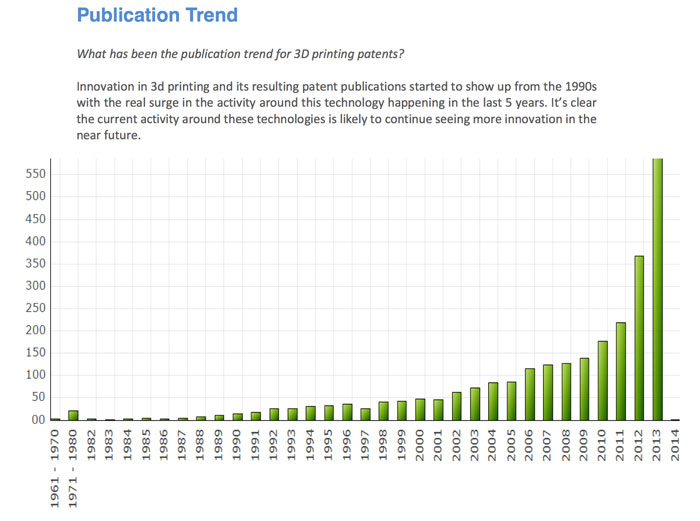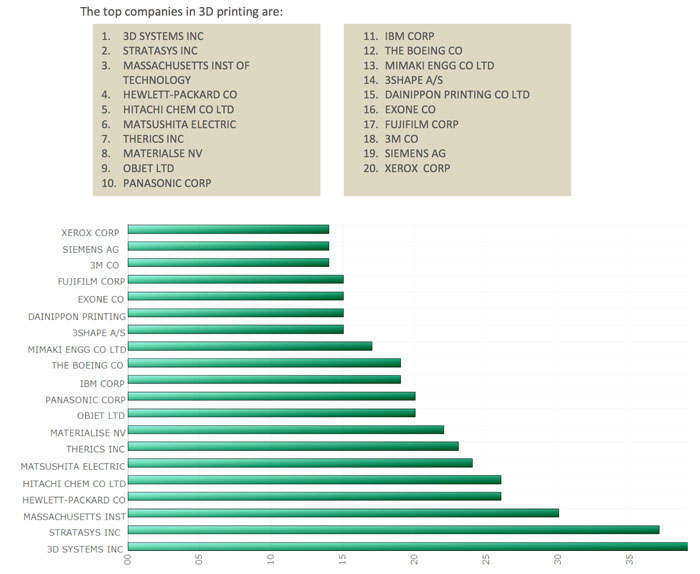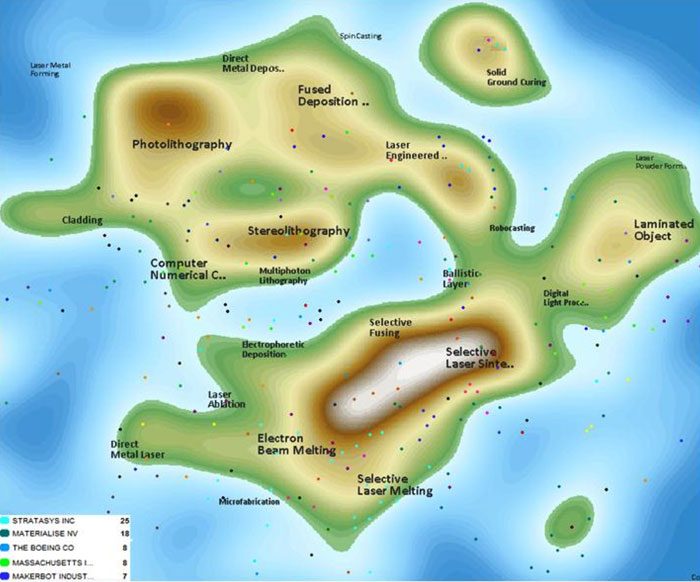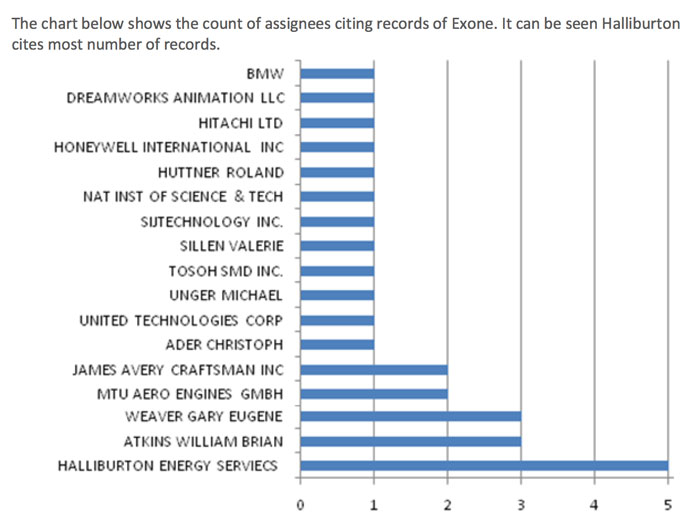There are people out there who are interested in taking advantage of the 3D printing hype to get their slice of the action. There are others who feel encumbered by the breadth of patents already preventing them from innovating with tried and true ideas. And there are those curious about the world of 3D printing and its patents. Then, there’s everyone else who couldn’t care less about IP and 3D printing. For everyone, excluding that last group, there’s a free online report that can educate you, or refresh your knowledge, about 3D printing and all of its relevant patents from 1990 to the present.

The report, titled “ Technology Insight Report: An analysis of patenting activity around 3D-Printing from 1990-Current” was generated by Gridlogics using its Patent iNSIGHT Pro and PatSeer patent research and analysis platforms. Using their PatSeer software, Gridlogics searched through existing patents to find those related to the field of additive manufacturing, manually removing items that don’t fit into the tech like 2D inkjet printing onto 3D objects. They then filtered the search terms to only include patents filed after 1990 and broke the 2635 records up into three broad categories: Technologies, Materials, and Applications. The results are pretty interesting.
The report is 44 pages long, with many useful charts developed out of the PatSeer data, so, for a more detailed look at what Gridlogics was able to turn up, it might be best to download it for yourself. The software is able to perform tasks like sort the results by which companies filed the most to the least amount of patents, revealing that, unsurprisingly, between 1990 and 2014, 3D Systems filed the most, followed closely by Stratasys, and then, more surprisingly (to me anyway) followed by MIT. They were also able to sort the patents by country, revealing that 946 of the 2635 records were filed in the US, with Japan and then Canada in second and third place in this category. The report sorts how many of the patents were filed by which inventors, listing James F. Bredt as the inventor with the highest number of patents with 21, assigned to MIT, 3D Systems and Z Corp.
Other data curated by the software includes which technologies the top 15 companies in the field have patents on, with the highest number attached to stereolithography, followed by fused deposition modelling and selective laser sintering. The materials patented by the companies are also displayed. 3D Systems holds patents in almost every material listed, from ceramic and epoxy to aluminium and titanium, while Stratasys clearly has the most patents in thermoplastics. The report lists that “Tissue Engineering is the most researched application area focused by most of the companies” and that “Boeing leads the record count for the defense and aerospace industry.”
All of this info comes from only the first half of the report, with plenty more to go, including fun charts that show the intersection of materials by research sector (“Aluminium and Titanium are actively used in Aircraft and Automobile manufacturing”), landscape maps of which companies hold patents for which technologies, polygon charts of which inventors are associated with which companies, and more. For instance, below is a chart of which companies are relying on ExOne patents.
Gridlogics’ report obviously doubles as a method for marketing its research and analysis software. By choosing, possibly, the hottest technology at the moment – I’m biased obviously – with which to generate such a report, they’re sure to get a lot of hits. As a marketing tool, though, it might just work. The report provides a lot of insight into the industry, piquing my interest into looking into the software further. As an in-depth, web-integrated Excel for patents, one might be able to modify Gridlogics’ parameters a bit so as to include a longer timeline or a more narrow set of search terms. Of course, I’m broke, so I won’t be ordering it, but let me know what you come up with!
Source: Gridlogics





Leave A Comment